
New Deal Construction on the NC State Campus

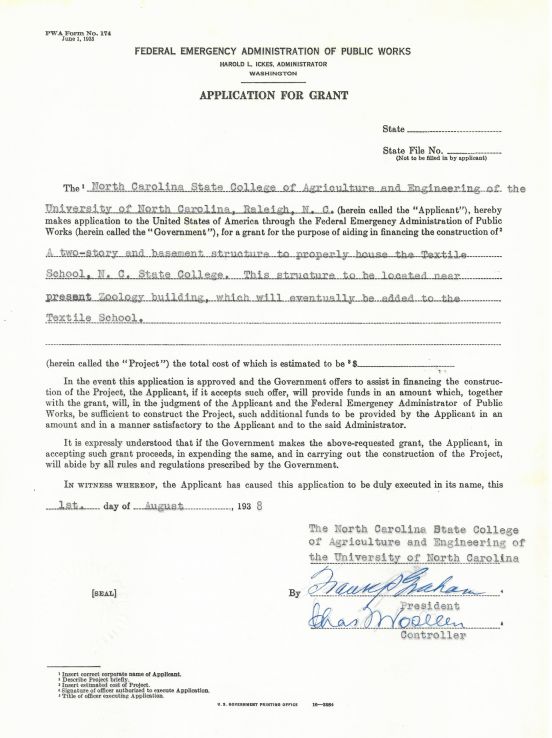
The NC State campus changed significantly with the New Deal, President Franklin D. Roosevelt's signature program to revive the American economy during the 1930s Great Depression. More than 12 buildings were constructed on campus through federal government funding, and most remain today. A interesting website called the Living New Deal is documenting all United States structures resulting from 1930s government programs. This website hadn't covered any of NC State's buildings, but we recently changed that! The entries I contributed are listed under the Raleigh, NC, page of the site. Links to individual building entries are below.

The Public Works Administration (PWA) and the Works Progress (later Work Projects) Administration (WPA) funded most 1930s construction at NC State. These were two separate federal agencies, but the public frequently conflated them. In many respects, the funding functioned as grants--the agencies awarded money to the college that then paid contractors and construction workers to erect the buildings. These work programs' real purpose was to create employment during the Great Depression, but their visible legacy has lasted ever since. The photo album Major College Projects of the Public Works Administration describes some of the NC State projects.
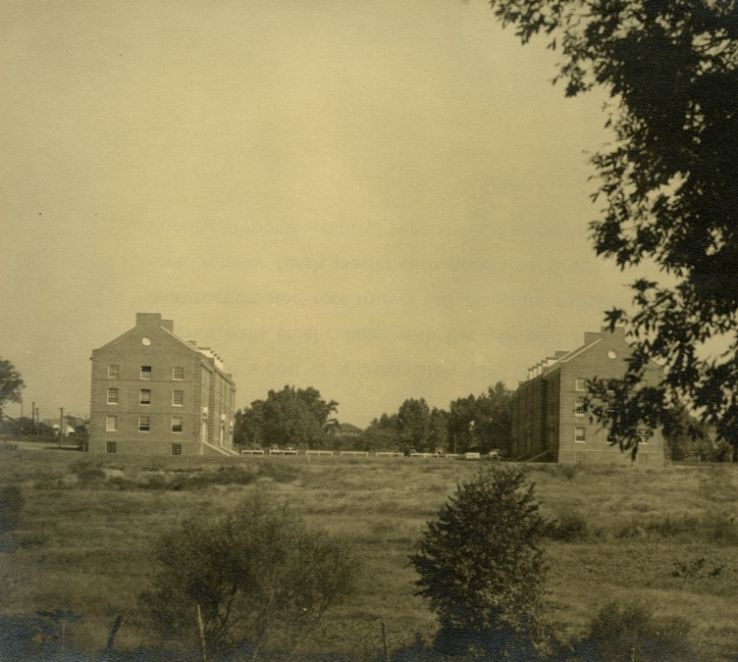
Alexander and Turlington Halls
Constructed under the PWA as part of the same project, Alexander Hall was originally known as "A" Dormitory and Turlington as "C" Dormitory. Architecture professor Ross Shumaker was the designer of record for both buildings (completed in 1940). (See more online resources for Alexander and Turlington Halls.)
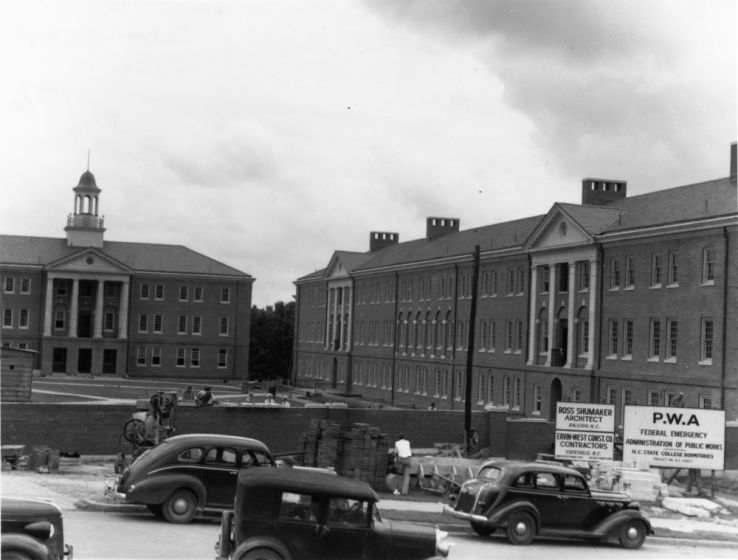
Becton, Berry, and Clark Halls
Construction of these buildings (also designed by Shumaker) fell under a single PWA project. Becton was originally known as Eighth Dormitory, Berry as Ninth, and Clark as Tenth. Construction occurred in 1938 and 1939. (See more online resources for Becton, Berry, and Clark Halls.)
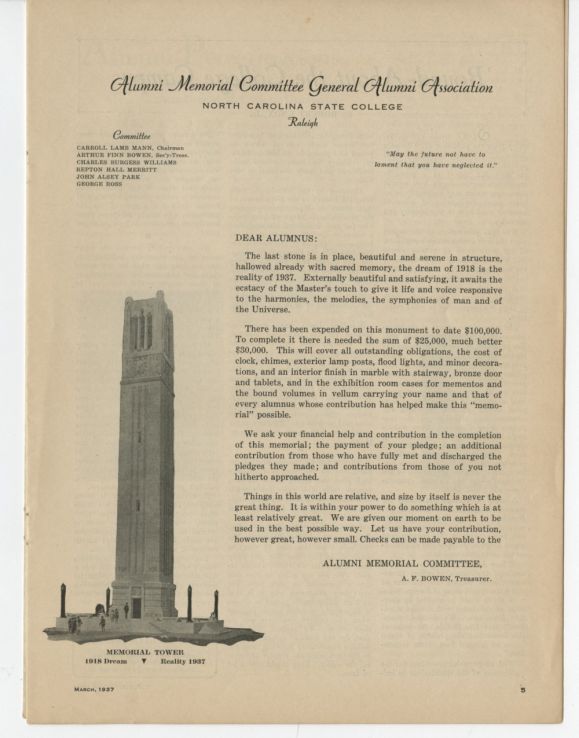
Memorial Belltower
Although partially constructed in the 1920s with alumni contributions, the Belltower remained unfinished during the early Depression. WPA funding allowed the building's shaft to be completed in 1937. The project also included the quarrying (in Surry County) and transportation of the granite. (See more online resources for the Belltower.)
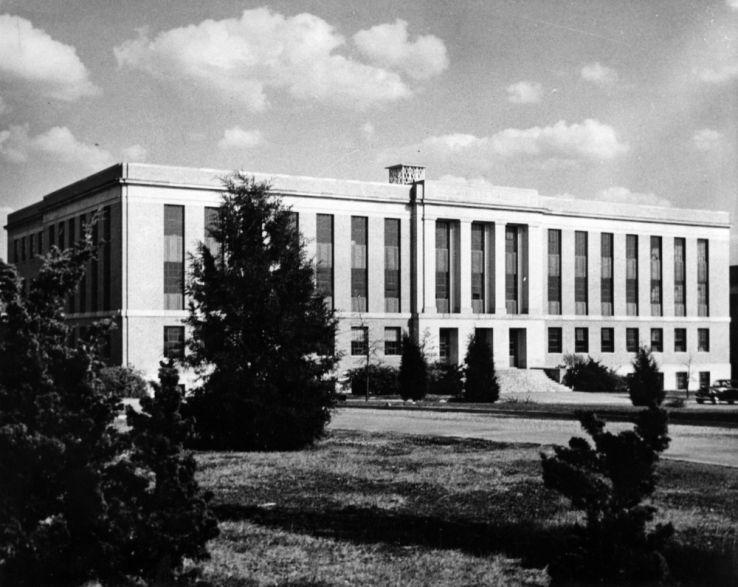
Nelson and Withers Halls
These PWA projects resulted in a specialized Textile Building (later named Nelson Hall) and a chemistry building with classrooms and laboratories (named Withers Hall while still under construction). Both were completed in 1939 and designed by architect G. W. Carr (the front facades share similarities). J. E. Sirrine is credited with the engineering design of Nelson. (See more online resources for Nelson and Withers Halls.)
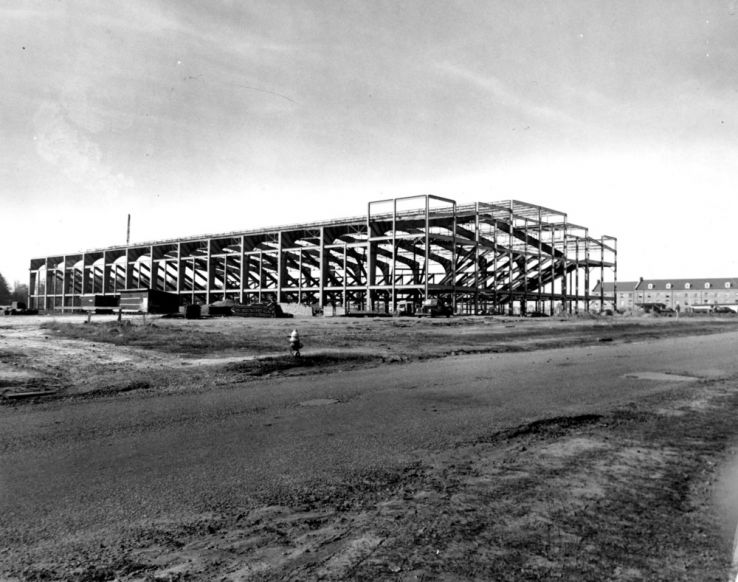
Reynolds Coliseum
Construction on Reynolds began in early 1942 with WPA funding. The building was originally conceived an armory and student assembly hall, as well as an athletics venue. Shumaker is credited (in part) with the design. Progress with the skeleton halted when World War II intervened. After the war, construction recommenced when the college arranged other funding sources, and the men's basketball team first played games there in Dec. 1949, long after the Depression had ended. (See more online resources for Reynolds Coliseum.)
College of Veterinary Medicine Barns
Long before the College of Veterinary Medicine existed, NC State operated a dairy farm on the site. The PWA funded construction of barns and other buildings there during the late 1930s. Shumaker was again the architect.
Other New Deal Construction
PWA-funded renovations also took place in Tompkins and Patterson Halls, as indicated in Major College Projects of the Public Works Administration. Renovations may also have occurred in Daniels Hall. Subsequent construction in these buildings have probably removed or altered this work.
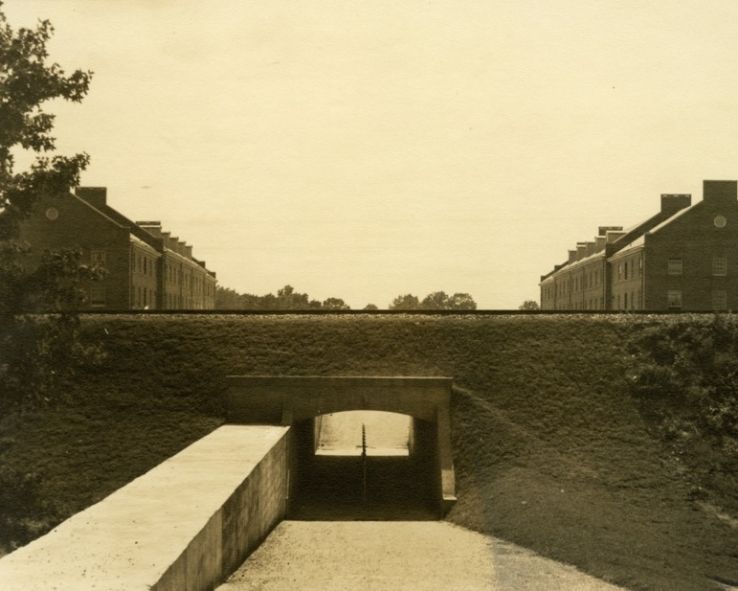
A service underpass was constructed under the railroad tracks near Alexander and Turlington Halls in the late 1930s. There is little documentation to link this to the New Deal, other than Major College Projects of the Public Works Administration. It became the Free Expression Tunnel much later, after the university allowed painting there in 1967.
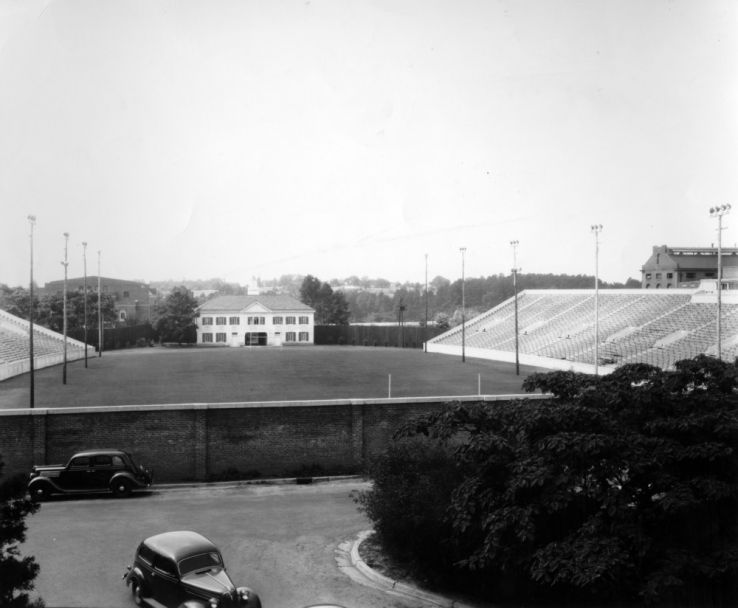
Riddick Stadium, on the site later occupied by SAS Hall and the adjacent parking lot, predated the New Deal, but it saw significant improvements during the 1930s. In 1933, concrete stands were erected on part of the east side under a Reconstruction Finance Corporation (RFC) loan. The following year the PWA completed the east stands and in 1935 erected concrete stands on the west side. The original plans called for south-side stands (forming what would have been a U-shaped stadium), but these were never built. Instead, a field house was built there under WPA funding (completed by 1938). The east stands were demolished in 1968, the west stands and field house in the early 2000s. (See more online resources for Riddick Stadium.)
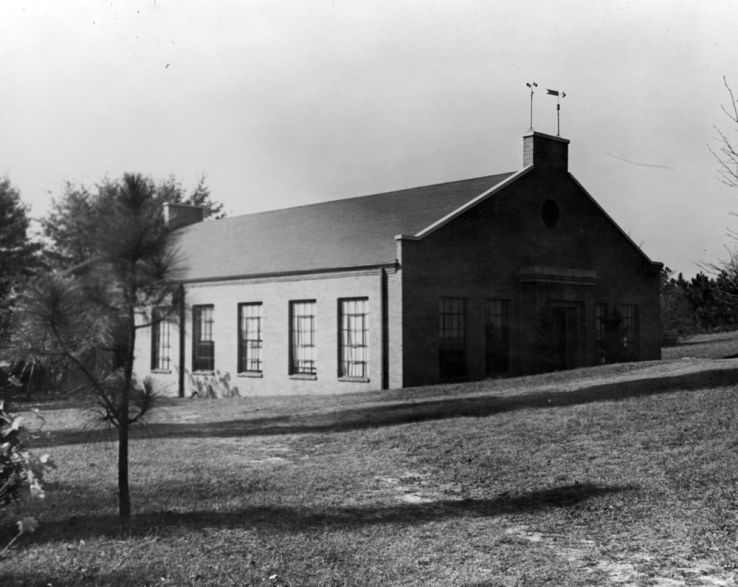
In 1938, the college signed an agreement with the National Youth Administration (NYA) for the later to build a training center on campus. Over the next few years a group of buildings was erected on a site later occupied by the east side of Miller Field and the Jordan Hall Addition. This complex became known as "the NYA Buildings," and the college took them over in 1943 or 1944. They were demolished in 1959.
In Dec. 1934, the college used Federal Emergency Relief Administration (FERA) funding to pay students to plant trees for a proposed arboretum designed by Julius Hofmann, founder of NC State's academic forestry program. The site extended from what is now Reynolds Coliseum, across Dail Softball Stadium and Rocky Branch, and up the hill toward the Weisiger-Brown Athletics Facility. Most, if not all, of these trees must have been felled during subsequent construction.
Sources
The University Archives holds numerous sources documenting New Deal construction on campus. The original photo album Major College Projects of the Public Works Administration is in the University Archives Photograph Collection, Campus Facilities and Views Photographs (UA 023.005), Box 70, Folder 34. Other sources include the Technician student newspaper (various issues); Alumni News (various issues); University Archives Reference Collection, University Buildings, Sites, Landmarks Files (UA 050.004, various folders); Memorial Tower Committee Records (UA 022.055), Box 2, Folders 6-8; Office of the Chancellor, John William Harrelson Records (UA 002.001.002, various folders); Office of Finance and Administration, Facilities Division, Design and Construction Services Department Records (UA 003.004, various folders); Athletics Subject Files (UA 015.007), Box 8, folders 5-6; Office of the Vice Chancellor for Finance and Administration Records (UA 003.001, various folders); North Carolina State University, Division of Student Affairs, Office of Religious Affairs records (UA 016.036, various folders); Physical Environment Committee Records (UA 022.008), Box 1, Folder 2).